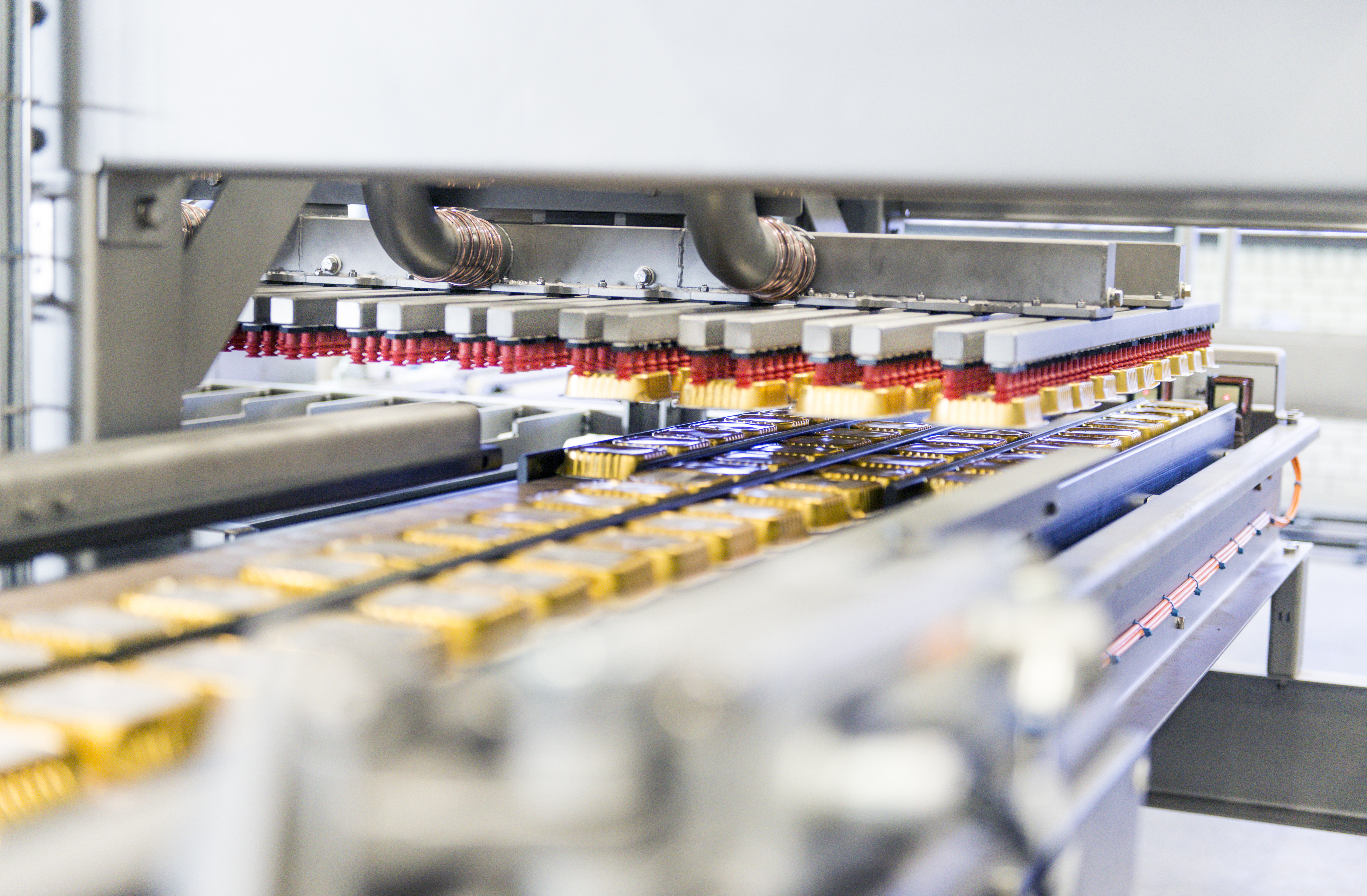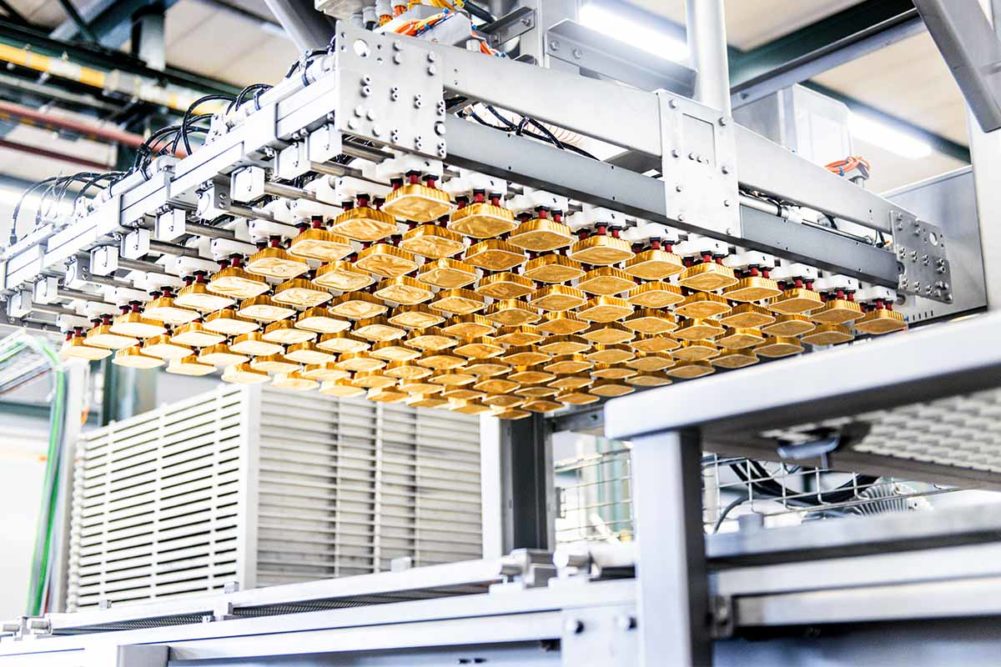This article was published in the December 2021 issue of Pet Food Processing. Read it and other articles from this issue in our December digital edition.
A vessel for wet pet food or treat products can be flexible or rigid in nature, but recent growth in the overall category shows that there is room for both cans and pouches.
A variety of factors, from the rise in households with pets to the humanization of pets, have spurred greater demand for pet foods and treats and the accompanying diversification in products and packaging that is leading to more and different can and pouch uses.
“General demand in pet food is rising at quite a high rate but this is quite generally known. What is more interesting to us is the increased diversity,” declared Milou Jansen, marketing and communication manager, Lan Handling Technologies, Tilburg, the Netherlands.
Maxwell Davis, general manager, Waldner North America, Hawthorne, N.Y., agreed that diversification is evident in the marketplace.
“We’ve seen tremendous shelf space changeover during the last year,” Davis said. “The increase in market share for wet, fresh and specialty foods has been a real driver in aisle expansion in most big box stores. Brands are hungry for differentiators, be that in ingredient profile, wellbeing claims, or most commonly packaging style and presentation.”
Jeff Arthur, technical sales director for Promach’s Covington, Ky.-based Allpax group, also cited that trend.
“Pet food processors are trying to broaden their bandwidth, taking advantage of the situation and not just doing one thing, like only dry food in this zip bag or only wet food in this-sized can,” Arthur said. “They are expanding their container sizes and ranges and maybe into different types of containers they offer and different formats.”
The disruption factor
Recent disruptions in the supply chain and labor shortages in markets around the world have only amplified the need for adaptive packaging solutions for popular formats like cans and pouches. In some parts of the world, cans were in short order during 2021 and in most parts of the world, a steady, stable roster of workers is hard to come by.
“One of the challenges now, given the situation with the supply chain and the explosive growth in the pet food industry, is that the lead time for everything is extended out,” Arthur reported. “Nothing can happen fast enough.”
Tom Rychlewski, food and beverage core team leader for the design-build firm CRB Group that helps engineer production and packaging lines, affirmed that packaging providers are working closely with processors to help them solve some of the recent market-driven challenges.
“Certainly, there has been a huge increase in demand,” Rychlewski said. “At least three companies I’ve been talking with are only able to fulfill 40% to 60% of orders. In other cases, some wet pet food manufacturers that use co-packers are struggling with things like the quality of the product and the amount of demand.”
Packaging partners are stepping in to help address these emerging and important supply chain and operational problems.
“The recent pandemic but also, for example, Brexit, have shown that availability of labor and the ability to adapt quickly to changes in demand are some of the concerns of our customers that we need to address as well,” Jansen said.
Can-do attitudes and solutions
If this is a climate marked by a trifecta of strong product demand, product line diversification and market-related challenges, packaging companies are offering new materials, equipment and process suggestions to help pet food companies adapt and excel when they can.
Jansen emphasized the importance of a versatile packaging system that can accommodate some of the recent trends and shifts.
“Where most fully automated applications in the past were specifically aimed for mono-type products, nowadays this is no longer the case,” she explained. “One of the keys is being able to deliver an adaptable machine which at the same time is reliable and predictable. That is why our handling systems for both pouches and cans can be equipped in such a way that several product types can run over a line.”
As part of the trend toward product innovation and diversification, Jansen cited the growing use of variety packs and the need to incorporate more canned or pouched products in a pack.
“This creates a lot of demands on your entire production flow and logistics process,” Jansen said.
In response, Lan Handling has developed a variety pack unloader to ensure that a processor can use a balanced and continuous infeed of the packaging machines.
Arthur echoed the sentiment that recent solutions and improvements have focused on versatility.
“More than anything, what we’ve tried to do is to help them adapt to changing container platforms and give them more flexibility to handle a wider range of products and customizing our equipment offering, especially on the automation side or the material handling side, to adapt to their business needs,” Arthur said.
He pointed out that automation in can and pouch systems helps address some of the challenges related to labor.
“A lot of our operations are around automation now, whether it’s a new fully automated retort system or helping manufacturers upgrade their existing retort system that may not be fully automated,” Arthur said. “And it’s not just automating equipment in the retort room – it’s upstream and downstream on the packaging system.”
Rychlewski said he foresees more automation, including the use of robotics, as the labor crunch continues and as processors recognize the cost-benefit equation.
“It’s coming. We were talking to a company the other day about a (robotic) system, how they can get it installed, programmed, and ready to go at $60,000 per unit,” Rychlewski shared. “When you start comparing that to the labor force, it starts to look attractive.”
He highlighted another labor- and resource-saving solution to consider.
“Some of the real advancements are in changeover capabilities and timelines,” Rychleski said. “On a recent project, for example, some of the new seamer and filler providers standardized their parts and modulized them so they can be put in different facilities, so it’s a lot easier for changeover.”
 Retort systems must be flexible to handle the increased diversity in packaging sizes, shapes and materials. (Source: Lan Handling Technologies)Beyond versatility and automation, today’s can and pouch lines reflect premiumization trends.
Retort systems must be flexible to handle the increased diversity in packaging sizes, shapes and materials. (Source: Lan Handling Technologies)Beyond versatility and automation, today’s can and pouch lines reflect premiumization trends.“In addition to the growth in the number of SKUs, we are also increasingly seeing innovative forms of packaging,” Jansen said. “Think of pet food mousse in the shape of a pyramid topped with gravy. Think of small flavor sticks of only 15g. Think of split tubs. These pose major challenges in handling, like the efficient loading and unloading of autoclaves. The shape, the size, the films and materials used, any tear notches – everything can influence the efficiency of a handling system.”
The frequent push for high-end presentation is also influencing the way products are packaged in pouches and cans.
“Products that are being immediately packed after the retort process demand clean and dry products,” Jansen said. “Proper labeling or direct loading of products, including cans and jars, into secondary cardboard packaging require dry product.”
Jansen noted that Lan Handling has developed an in-line dryer with a smaller footprint and lower energy consumption. On that note, more sustainable features are being built into or enhanced with packaging systems for cans and pouches.
“When we are doing retrofit work and add-ons, or building new systems, energy savings is a consideration, especially with batch retort systems if there is an opportunity to capitalize on water or steam savings,” Arthur said.
“The increase in market share for wet, fresh and specialty foods has been a real driver in aisle expansion in most big box stores,” said Maxwell Davis, general manager, Waldner North America.
Cans and pouches can also find their place in sustainable product lines or operations.
“For many years now, there have been concerns about cans going away, but it never seems to happen,” Arthur said. “Especially in this type of situation in which we are in — with the current economic climate — canned foods are having pretty strong growth now because of their affordable, shelf-stable properties, and people are starting to think about how products like cans are recyclable.”
On the pouch side, Rychlewski shared, “When you’re looking at shipping empty cans in a truck going to a manufacturer, it takes up a lot of space compared to a roll of plastic or premade pouches.”
He also pointed out that some of the pouches he’s seen are made from more sustainable materials, adding that innovations in pouches can also improve product quality. Sous vide is an example of this.
While there are advances in packaging materials and equipment designed to meet the growing and diverse needs of today’s pet food manufacturers, other traditional drivers are also on the priority list. Efficiency is one of them.
“Especially at the highest operating speeds, the downstream knock-on effects in packaging, seal quality, or other defects function as exponentials,” Davis said. “The faster your equipment operates the more important packaging quality, product consistency and fill accuracy becomes. We’re seeing increased importance of dynamic cost analysis that accounts for more than just the typical labor and raw material inputs.”
Finally, food safety remains top of mind as well. Jansen said features like sophisticated software sequencing, retort loading via shuttle and interfacing and data connectivity with retort suppliers help assure both the safety and quality of pet food products.
“One hundred percent food safety has become an absolute necessity,” Jansen said. “Especially when it comes to sterilizing pet food, manufacturers want to be sure that contamination can never take place.”
Read more about packaging solutions and trends for pet food and treats.




